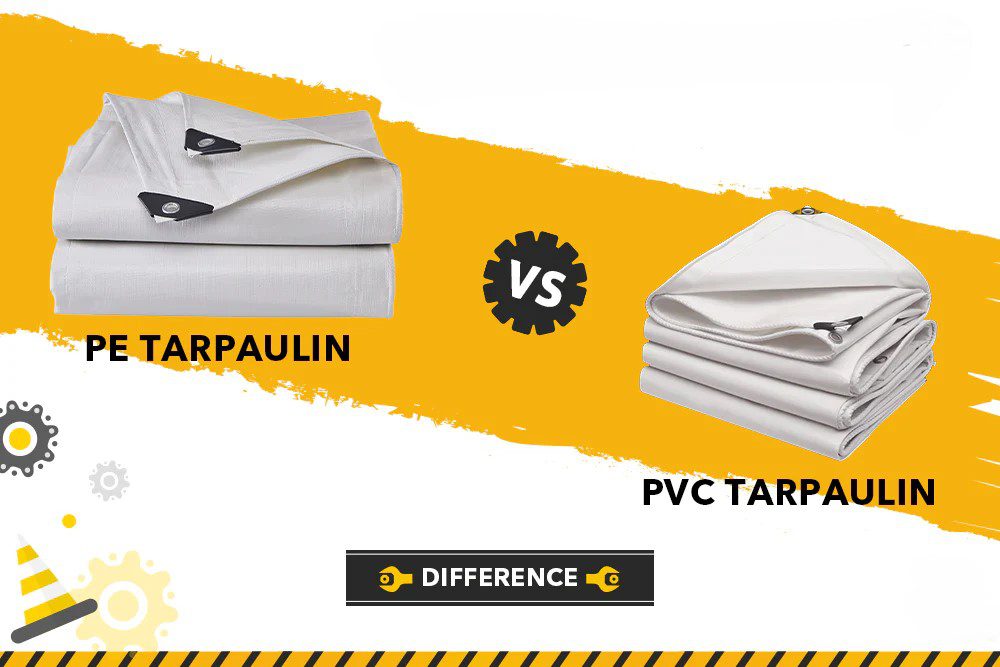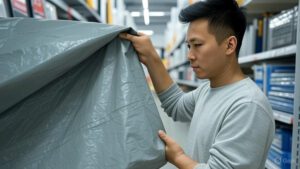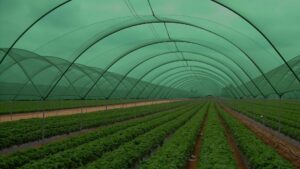In the UAE’s scorching climate, tarpaulins are essential for outdoor protection, whether for construction, logistics, agriculture, or even household use. But when it comes to choosing the right tarp, the material matters. The two most common types, PE (polyethylene) and PVC (polyvinyl chloride), serve different purposes.
In this blog, we’ll break down the key differences between PE and PVC tarpaulins, helping you choose the best option for your specific needs in Dubai, Abu Dhabi, Sharjah and across the UAE.
What is PE Tarpaulin?
PE tarpaulin is made from woven polyethylene fabric and coated with a protective plastic layer. It is lightweight, flexible, and often used for short-term applications such as covering equipment, temporary shading, or protecting goods from dust and light rain.
Features
- Lightweight & easy to handle.
- Water-resistant but not fully waterproof.
- Affordable and cost-efficient.
- Best for light-duty use.
Visit our PE tarpaulin service page for more details
What is PVC Tarpaulin?
PVC tarpaulin is a high-strength, vinyl-coated polyester fabric that offers durability, waterproofing, and weather resistance. It’s ideal for heavy-duty and long-term applications such as truck covers, tents, outdoor structures, and industrial or marine use.
Features
- Fully waterproof & UV-resistant.
- Tear-resistant and long-lasting (3–7 years.)
- Heat-sealed seams for maximum protection.
- Ideal for heavy-duty outdoor and industrial settings.
Explore our PVC tarpaulin range and specifications
PE vs. PVC: Key Differences
| Feature | PE Tarpaulin | PVC Tarpaulin |
| Material | Woven polyethylene | Vinyl-coated polyester |
| Waterproofing | Water-resistant | 100% waterproof |
| UV Protection | Basic | Excellent |
| Durability | 6–12 months | 3–7 years |
| Weight (GSM) | 90–200 GSM | 450–700+ GSM |
| Use Case | Temporary/light-duty | Heavy-duty/long-term |
| Cost | Budget-friendly | Higher investment |
Both options have their place; what matters is choosing based on environmental exposure, load capacity, and intended use.
Use Case Scenarios
Choose PE Tarpaulin for:
- Temporary shading at events or gardens.
- Dust protection for machinery or goods.
- Light-duty covers for market stalls.
- Budget-conscious residential or small business use.
Choose PVC Tarpaulin for:
- Long-term truck and trailer covers.
- Industrial scaffolding and construction protection.
- Outdoor event tents and structures.
- Farm, warehouse, or marine equipment covers.
Which One Should You Choose?
Choosing between PE and PVC tarpaulin boils down to this:
- Short-Term, Budget-Friendly Project? → Go with PE
- Long-Term, Heavy-Duty Protection? → Opt for PVC
If you’re not sure, our team at Exclusive Tarps can recommend the right thickness, size, and GSM for your specific application.
Final Thoughts
PE and PVC tarpaulins each serve unique purposes, and choosing the right one can save you time, money, and frustration in the long run. Whether you need temporary shading for a garden event or long-term weatherproofing for industrial equipment, there’s a tarp that fits.
📞 Reach out for expert advice or request a custom quote based on your needs in Dubai or anywhere across the UAE.
Frequently Asked Questions
Is PVC tarpaulin better than PE?
Yes, for long-term and heavy-duty applications, PVC is better due to its waterproofing, UV resistance, and durability. But PE is lighter and more affordable for temporary use.
Can both PE and PVC tarps be used outdoors in Dubai?
Yes, but PVC performs better in extreme heat and sun, making it ideal for Dubai’s climate. PE is more suitable for shaded or short-duration uses.
Are PVC tarpaulins recyclable?
Some PVC tarps are recyclable, but always check for eco-labels or supplier information. PE tarps are generally easier to recycle in municipal systems.
Can I customise the size and thickness of tarpaulins?
Absolutely. At Exclusive Tarps, we offer custom sizes, thicknesses (GSM), and colours for both PVC and PE tarpaulins.
What is the lifespan difference between PE and PVC tarps?
PE tarps last 6–12 months, while PVC tarps can last up to 7 years, depending on exposure and usage.




